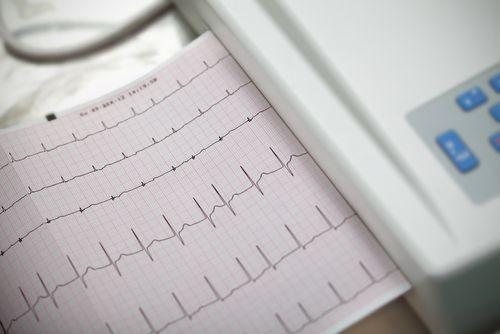Atrial Fibrillation Can Now Be Treated Painlessly With Optogenetics

A non-electrical cardioversion therapy, which could be the first shockless procedure to treat atrial fibrillation (AF), was demonstrated today at the Frontiers in CardioVascular Biology (FCVB) 2014 in Barcelona, Spain. The meeting is organized by the Council on Basic Cardiovascular Science of the European Society of Cardiology (ESC) in collaboration with 13 European cardiovascular science societies.
AF, which is caused by irregular heartbeat, is estimated to affect 2.5 million Americans. The heart is an electrical system, and how it beats all depends on how this electrical system is working. In people with AF, this electrical system malfunctions as a result of the upper and lower chambers of the heart cannot work in tandem. The upper chambers start to fibrillate, that is, they start contracting very fast and irregularly. An irregular heartbeat may often result in chest pain or even heart failure if its beating too fast. Age and a history of high blood pressure or heart conditions may be the most common cause of AF, though it may also be caused due to congenital heart defects or excessive drinking.
"AF is the most common cardiac arrhythmia. Symptoms range from the feeling of fish flapping in the chest, to tiredness and exercise intolerance. AF can lead to tachycardia induced cardiomyopathy and thromboembolic events which increase the risk of morbidity and death," said study author Dr. Brian O. Bingen. "Preventing these symptoms and complications requires bringing the patient out of AF and back to the normal sinus rhythm. The quickest way to do that is to deliver an electric shock. The shock depolarises and synchronises the heart muscle and allows the sinus node to re-establish a normal rhythm."
During early episodes of AF, the symptoms may last only for a few minutes and go away but over time it may last longer and eventually become chronic with symptoms lasting 24 * 7. Shock treatment is such cases proves ineffective in bringing the heart back to its natural rhythm. "AF causes structural changes to the atrium which make patients more prone to subsequent induction of AF. That's another reason to get patients back into sinus rhythm as soon as possible”, said Dr. Bingen, in a press release.
The defibrillation method Dr. Bingen and his team have developed is shockless and uses optogenetics to genetically insert depolarising ion channels into the heart that can be activated by light. Dr. Bingen said, "The theory was that we could just turn a light switch on and depolarise the entire myocardium without needing a shock. In theory, the patient could be given an implantable device with a mesh of light emitting diodes (LEDs) and when AF occurs you turn the light on and the AF stops."
AF’s occur subepicardially that is in the inner layers of the heart. In order to observe how their method works, the scientists had to create a 2D heart by isolating cardiac muscle cells from the rat atrium, replating them in a culture dish and allowing the cells to form intercellular connections. AF was induced in 31 of these 2D hearts. The researchers used a lentivirus to insert a gene into the 2D hearts called calcium-translocating channelrhodopsin (CatCh), which is a light sensitive depolarising channel.
"Then it was just a matter of switching on the light and seeing what happened. We found that in all 31 of these 2D hearts we were able to achieve the 2D equivalent of cardioversion into sinus rhythm. The mechanism we saw was a bit different than the normal defibrillation but was equally effective," Dr. Bingen said. "We now have to test our method in the 3D setting. In that scenario we won't be able to see the defibrillating mechanism in as much detail, but we hope that it will be possible to terminate AF in the complete heart. We will also test other types of light or energy sources that penetrate the body more deeply and could be applied externally, avoiding the need for an implanted device."



























